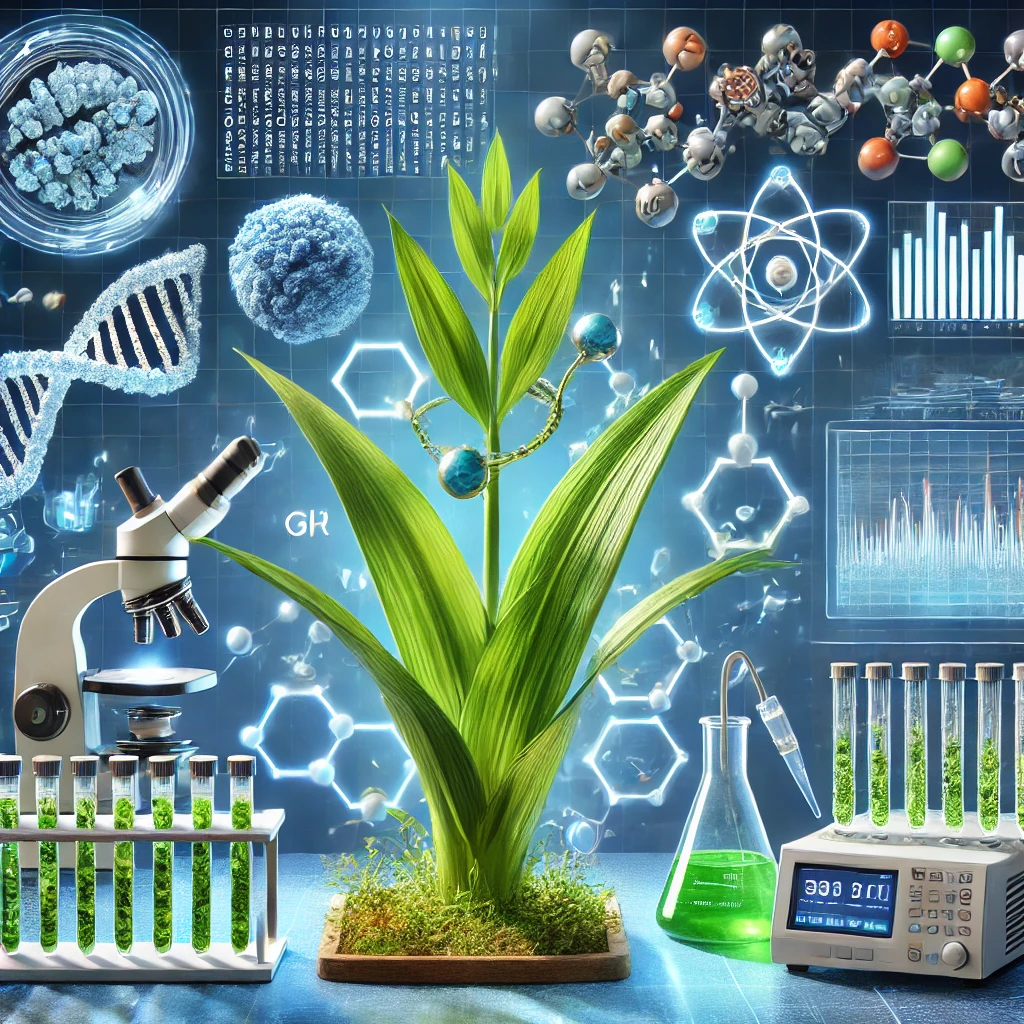Climate change is reshaping global agricultural landscapes. One of the most pressing challenges for farmers and scientists is the increasing intensity and frequency of heatwaves. Crops are increasingly subjected to high-temperature stress, which can severely impair growth, reproduction, and yield. To safeguard global food production, researchers are exploring innovative physiological and molecular strategies that help plants withstand such stress. Among these strategies is thermopriming. It involves exposing plants to mild heat stress. This prepares them for future, more intense heat episodes. Thermopriming is emerging as a powerful tool in climate-resilient crop management.
Thermopriming enables plants to develop a stress memory. This process allows them to “recall” previous experiences. As a result, plants respond more efficiently to subsequent heat stress. This mechanism involves complex physiological, biochemical, molecular, and epigenetic changes. These changes provide a sustainable way to enhance crop productivity under climate variability.
What is Thermopriming?
Thermopriming is a form of induced tolerance. Exposure to a moderate heat stimulus preconditions the plant. This heat is typically a few degrees above the optimal growth temperature but below the damage threshold. It enables the plant to tolerate more severe stress. Unlike short-lived acclimation responses that vanish after the stress ends, thermopriming creates a lasting imprint. It affects the plant’s stress response systems.
This “heat memory” can persist for days or even weeks. In some cases, it can influence the next generation through transgenerational epigenetic inheritance. The phenomenon is part of a broader group of adaptive responses called priming. This group also includes drought priming, cold priming, and salt priming. However, thermopriming is unique in its direct relevance to global warming and heat-related crop failures.
Physiological Adjustments Induced by Thermopriming
Plants rely on a series of coordinated physiological adjustments to mitigate the damage caused by heat. Thermopriming fine-tunes several of these processes:
1. Photosynthetic Efficiency
High temperatures often cause photoinhibition, where the photosynthetic machinery, especially Photosystem II (PSII), is damaged. Thermopriming preserves the structural integrity of thylakoid membranes, ensuring efficient electron transport and chlorophyll fluorescence. This helps maintain photosynthetic rates and supports continued growth even under prolonged stress.
2. Improved Water Balance
Thermoprimed plants show improved leaf relative water content (RWC) and better water use efficiency (WUE). They often exhibit deeper root growth. This allows better access to soil moisture. Reduced stomatal aperture collectively helps balance transpiration and CO₂ uptake. These adjustments protect cells from desiccation and maintain turgor pressure necessary for expansion.
3. Membrane Thermostability
Cell membranes are particularly vulnerable to high temperatures, leading to electrolyte leakage and metabolic disruption. Thermopriming enhances membrane stability index (MSI) by preserving lipid composition and maintaining the function of ion transport channels. This allows cells to retain solute gradients, which are vital for energy metabolism and osmoregulation.
4. Enhanced Antioxidant Activity
Heat stress accelerates the production of reactive oxygen species (ROS) such as superoxide radicals and hydrogen peroxide. Thermoprimed plants show increased activity of antioxidant enzymes like SOD, CAT, and APX. They also have higher levels of non-enzymatic antioxidants such as glutathione and ascorbic acid. This detoxification system prevents oxidative damage to lipids, proteins, and nucleic acids, preserving cellular integrity.
Molecular Mechanisms Behind Heat Stress Memory
The activation of a molecular memory system is the most remarkable aspect of thermopriming. This system allows plants to remember. It also enables them to respond faster to future heat encounters. This system operates through several pathways:
1. Activation of Heat Shock Factors (HSFs) and Heat Shock Proteins (HSPs)
During thermopriming, transcription factors such as HSFA1, HSFA2, and HSFA3 are activated. These factors regulate the expression of heat shock proteins like HSP70, HSP90, and HSP101. These proteins protect cellular proteins from unfolding and aggregation under heat.
HSFA2, in particular, is critical for maintaining the expression of stress-responsive genes long after the priming stimulus has ended. This contributes to a form of molecular preparedness that enables a more robust and rapid response during future heat stress.
2. Chromatin Remodeling and Histone Modifications
Thermopriming induces epigenetic changes that facilitate the long-term expression of heat-responsive genes. Histone H3 lysine 4 trimethylation (H3K4me3) is enriched at the promoters of genes like HSP101. This enrichment also occurs at the promoters of APX2 after priming. This modification keeps the chromatin in an open state conducive to transcription.
These marks can persist for several days, essentially “bookmarking” genes for rapid reactivation. In some cases, histone acetylation and DNA methylation changes also contribute to this primed state.
3. Non-coding RNAs and Memory Maintenance
Recent studies highlight the role of long non-coding RNAs (lncRNAs) and microRNAs (miRNAs) in regulating heat stress responses. These molecules can modulate gene expression post-transcriptionally. They may play a role in maintaining stress memory. Their exact functions in thermopriming are still being uncovered.
Thermopriming in Major Crops: Case Studies
Thermopriming has been successfully applied in numerous crops, including cereals, legumes, vegetables, and fruit crops:
Wheat (Triticum aestivum)
Wheat is highly sensitive to heat during flowering and grain filling. Thermoprimed wheat shows increased spikelet fertility, greater thousand-grain weight, and better photosynthetic performance. Studies have demonstrated higher activity of SOD and CAT in thermoprimed wheat under heat stress (Liu et al., 2019).
Rice (Oryza sativa)
In rice, priming at the panicle initiation stage significantly reduces spikelet sterility and supports better pollen viability. This leads to improved grain set and yield, especially under conditions of terminal heat stress.
Maize (Zea mays)
Maize exhibits better membrane integrity and chlorophyll stability after thermopriming. Field studies have shown that primed plants perform better in terms of biomass accumulation. They also yield more grain under sudden temperature spikes.
Tomato (Solanum lycopersicum)
In tomato, thermopriming enhances fruit set, fruit quality, and lycopene content. The effects are associated with increased expression of HSPs and improved stomatal conductance under high temperatures.
Opportunities and Challenges in Agricultural Application
Opportunities
Eco-friendly and non-transgenic: Thermopriming does not require genetic modification and is aligned with organic and sustainable agriculture goals. Scalable potential: Thermopriming can be integrated into existing farming practices through seed treatment. It can also involve foliar application of signaling molecules or controlled heat treatments. Synergy with breeding: By identifying thermopriming-responsive genotypes, breeders can develop cultivars with enhanced responsiveness and longer-lasting stress memory.
Challenges
Genotype dependency: Not all cultivars respond equally to priming; breeding for priming responsiveness remains a key challenge. Duration and stability: The priming effect can be short-lived in some species, requiring repeated application or integration with epigenetic tools. Field standardization: Implementing thermopriming under open field conditions requires precise control over temperature. Timing may not be feasible for all regions or crops.
Future Prospects
As climate variability increases, thermopriming may be integrated with modern tools such as:
CRISPR-based gene editing to engineer long-lasting stress memory. High-throughput phenotyping platforms to screen large numbers of genotypes for priming efficiency. Smart agriculture sensors and IoT for automated heat priming applications based on weather forecasting.
Moreover, combination priming involves combining heat priming with drought or salinity priming. This method can provide multi-stress resistance. It makes crops resilient to complex environmental stress patterns.
Conclusion
Thermopriming is not just a biological curiosity—it is a strategic tool for climate-smart agriculture. By helping crops remember and resist high temperatures, thermopriming bridges the gap between stress exposure and sustainable productivity. It leverages the remarkable plasticity of plant systems to adapt, survive, and even thrive in a warming world.
As research continues to uncover the underlying mechanisms, it optimizes application strategies. Thermopriming is expected to become a cornerstone of future agronomic practices. This is where memory meets sustainability in the fight against heat.










